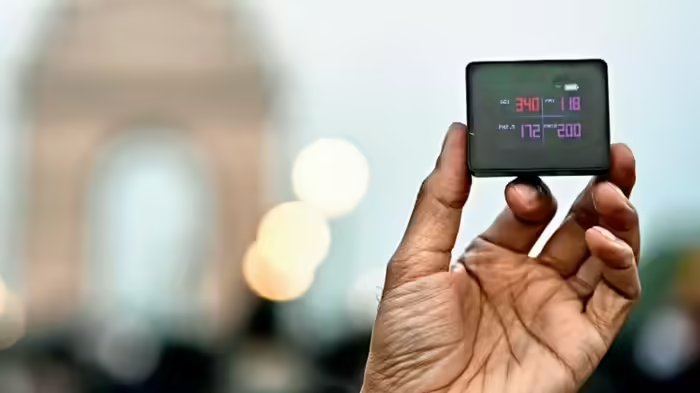
?
New Delhi | Sunday:
Delhi’s air has once again turned toxic, with pollution levels breaching the ‘severe’ category across several parts of the city. On Sunday morning, the Air Quality Index (AQI) stood at 391, remaining unchanged till 10 a.m. Despite the alarming figures, authorities have decided not to implement Stage-3 of the Graded Response Action Plan (GRAP-3) for now, citing slight improvement trends in the coming days.
Delhi’s Air Quality Remains Hazardous
According to the Central Pollution Control Board (CPCB) bulletin, Delhi recorded an overall AQI of 370 on Sunday, indicating “very poor” air quality. Nearby NCR cities also suffered — Faridabad (214), Gurugram (238), Ghaziabad (345), Noida (366), and Greater Noida (340).
At least three Delhi monitoring stations reported AQI levels above 400, while 14 locations recorded readings between 380 and 400. In Bawana, the AQI spiked to an alarming 410, signaling severe health risks, particularly for children, the elderly, and those with respiratory ailments.
CAQM Holds Back on GRAP-3 Restrictions
The Commission for Air Quality Management (CAQM) reviewed the situation in an emergency meeting held Sunday evening. The sub-committee observed that although pollution levels remain high, a gradual decline has been recorded over the past 48 hours. Considering this and weather forecasts predicting improved wind conditions, the panel decided not to reimpose GRAP-3 restrictions yet.
Stage-3 typically includes measures such as halting construction work, banning diesel vehicles, and suspending physical classes in schools, among other emergency interventions.
Toxic Air to Linger for the Next 10 Days
Meteorological forecasts suggest no major relief for the next 10 days. From November 10 to 12, air quality is expected to stay in the “very poor” category, followed by six more days of persistently unhealthy air. On Sunday, winds blew at a speed of 10–20 km/h, insufficient to disperse pollutants trapped in the city’s atmosphere.
Public Concern: Why Aren’t Schools Adopting Hybrid Learning?
Amid worsening air conditions, many parents have questioned why schools are still operating in full physical mode. In previous years, Delhi had switched to hybrid or online learning when the AQI crossed 350, prioritizing children’s health.
Education officials, however, stated that the decision to close or switch schools to hybrid mode will be reviewed only if AQI levels remain above 400 for several consecutive days. For now, the government has opted to “monitor and manage” rather than impose immediate curbs.
Health Experts Urge Caution
Medical experts continue to warn residents to stay indoors as much as possible, use N95 masks, and avoid outdoor exercise. Dr. Randeep Guleria, former AIIMS director, said,
“Even short-term exposure to this level of air pollution can trigger respiratory distress. Hybrid schooling should be activated proactively, not reactively.”
Discover more from SD NEWS agency
Subscribe to get the latest posts sent to your email.
